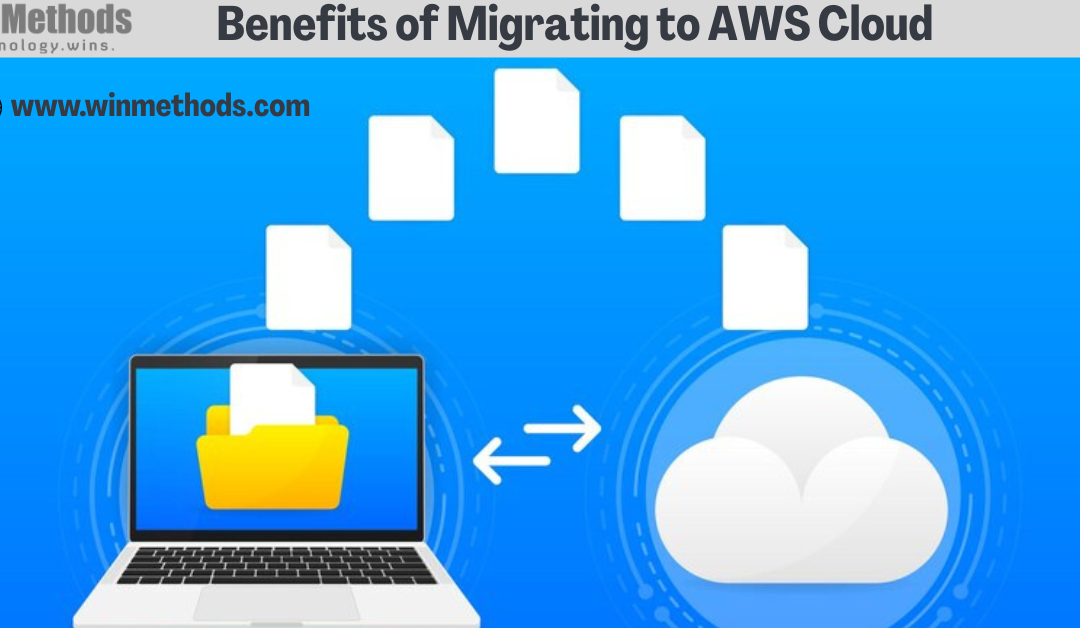AWS is an abbreviation of Amazon Web Services. AWS is a secure cloud platform for businesses to go for cloud migration. AWS migration moves the company’s IT infrastructure, applications, technologies, databases, servers, and websites from a private data center to the AWS cloud. By doing this, you can avail access to cloud resources to enhance your business growth, scalability, and flexibility with minimal effort and costs.
As cloud migration is gaining popularity, with organizations massively shifting to the cloud, it is important to realize that it is not as easy as you think. It involves certain processes and strategies for a secure digital transformation. It is the same with AWS cloud migration. In the AWS cloud migration, the breakdown of the process into various stages keeps the process simple and adaptive.
AWS migration simplifies the complexity into various stages: planning, discovery, design, migration, and validation. During the planning stage, an organization assesses its current environment, identifies applications and workloads suitable for migration, and develops a migration strategy. At the same time, the discovery stage involves identifying dependencies, performance metrics, and security requirements. In the design stage, the organization designs the target architecture and selects the appropriate AWS services. The AWS migration stage includes moving the applications and data to AWS, and the validation stage ensures that the migrated workloads function correctly and meet performance and security requirements.
Furthermore, AWS provides various tools, services, and resources to help organizations migrate to the cloud. The combination of AWS Migration Hub, Database Migration Service, Application Discovery Service, and Migration Acceleration Program makes planning, executing, and managing migration easier. Therefore, when executed carefully, the business is safely landed on the cloud for re-creating your business on a wider scale.
In this blog, you can learn the 6 key benefits of AWS migration that can help drive your business.
6 key benefits of AWS migration
Cost Reduction:
AWS infrastructure migration services allow you to fulfill all your business needs at a reduced cost. It is affordable compared to incurring unforeseen costs for installing, configuring, and managing the on-premises server.
Data Protection:
Data security is of the top priorities for companies to go for an on-premises-to-cloud migration strategy. It is a tough task for companies to manage, secure, and access the data on their private server, provided there is enough IT staff. In that case, you feel more at ease if you migrate to the AWS cloud. AWS cloud security migration establishes a strong data protection framework to safely move your company apps and databases to the AWS cloud. Additionally, you can encrypt data and take ownership to maintain and control data. Save the data in the format you want, delete it, and move it without hassle.
Improved resilience:
AWS hybrid architecture can make you better understand the computational resources the applications require to handle the increased traffic. Based on the analysis, you can invest. It is lacking in a typical architecture where your IT staff must estimate the computing resources required to provide the highest possible application uptime. In this case, there are chances for unproductive outcomes if the estimation goes wrong and a waste of money. So, move your company to the AWS cloud to address this issue. The entire IT infrastructure is supervised by AWS cloud migration, which manages issues with a cloud migration strategy.
Flexibility:
AWS hybrid cloud services offer a flexible foundation for customizing the components of your applications. The key feature of the AWS cloud is the ability to easily integrate many programming languages, operating systems, architectures, applications, and databases. When coming to programming languages, you need not worry about developing new codes because AWS Cloud is compatible with existing programming languages. Additionally, because AWS Cloud retains all data, you need not worry about data loss when transferring data to the cloud. Furthermore, you can adjust the architecture to your business needs to be ahead of time.
Scalability:
It would help to upgrade your application and services to meet changing business demands. For the application to function and satisfy customer demand, AWS hybrid architecture allows for integrating that application with other significant elements. In addition, to run the application without technical issues and increase uptime, you can use AWS capabilities like Elastic Load Balancing and Auto Scaling. So, get started with AWS cloud migration and avail the cloud migration services to ensure your application’s uptime, performance, and speed. You may therefore offer consumers reliable applications to meet their changing requirements.
Easy to use:
The AWS cloud platform allows the organization to maximize its IT resources to enhance existing applications and build new ones. Working on AWS cloud, your IT staff can effortlessly bring in the multiple components to keep the new and existing applications live and functional. In today’s technology advancements becoming the measuring tool for deciding the competence of any business, AWS hybrid cloud services assist in building new applications, and one of its features, AWS Management Console, provides access to application hosting platforms from where you can set the new application to the public use.
Step-by-step AWS cloud migration
Business Migration to the AWS Cloud is a complex process. It involves careful planning and execution. Here is a general step-by-step process for migrating to the AWS Cloud:
1. Assessment: First, thoroughly assess your existing IT infrastructure and identify applications, services, and data that need to be migrated. Then, move ahead with a clear picture of the business and technical requirements for the migration, including the timeline and budget.
2. Design: Develop a detailed migration plan that includes the AWS environment’s target architecture. This should include the networking, security, storage requirements, migration strategy, and timeline.
3. Setup: Thirdly, set up the AWS environment with necessary accounts, roles, and policies. Then, configure the networking and security settings, such as VPCs, subnets, security groups, and NACLs. Later, install any required software and configure the storage systems.
4. Migration: Migrate your applications, services, and data to the AWS environment according to the migration plan. This may involve several strategies, such as lift and shift, re-platforming, or re-architecting.
5. Validation: Test and validate the migrated applications and services to ensure they function properly in the AWS environment. Then, verify the performance, scalability, and reliability of the system.
6. Optimization: Optimize the AWS environment by implementing best practices for cost optimization, security, and performance. To optimize the usage of AWS resources, use AWS monitoring and management tools.
7. Management: Once the migration is complete, continue to manage the AWS environment to ensure that it remains secure, reliable, and cost-effective. Then, implement backup and disaster recovery strategies and monitor the system for issues or anomalies.
By now, you should have understood that every migration is unique and may require additional steps or adjustments based on your needs and circumstances.
In conclusion, AWS cloud migration is a good choice for companies using cloud infrastructure for business growth. It offers a wide range of services. High-performance IT infrastructure, security, cost savings, and greater productivity are all included in cloud migration services.
We hope this blog gave you a comprehensive understanding of AWS cloud migration service and strategies, AWS cloud challenges, and solutions.
Now the next thing to do is to contact the effective AWS cloud migration company if you’re prepared to move to the cloud. Working with a qualified AWS partner or consultant is equally important to achieve a flawless digital transition. Our AWS cloud migration services and cloud security solutions aid in setting up the infrastructure, programs, and databases in the cloud securely. Also, we provide managed services to keep your IT functions fully operational. Reach out to WinMethods Technologies to launch your business on the cloud adventure and take it to new heights.



Recent Comments